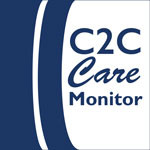Keeping original containers?
- This topic has 6 replies, 2 voices, and was last updated 6 years, 5 months ago by
Lillian Page.
-
AuthorPosts
-
-
November 8, 2017 at 2:27 pm #137593
Lillian Page
ParticipantHi all, I’m currently working with a series of Civil Defense kits from the 50s/60s, most of which come in rather large cardboard boxes/containers. I’m removing all the contents, cataloging everything, and storing items in appropriate materials, but I’d like to know what the general practice is for dealing with the original containers in this kind of situation. Some of the boxes are disintegrating and/or have a noticeably bad odor, while others are merely bulky. I’m considering photographing the box exteriors well and then disposing of the boxes in order to save room and resources, but I’d appreciate hearing others’ thoughts on this situation. Should I be keeping the boxes or is it acceptable to dispose of them so long as there’s documentation of this? Thank you!
-
November 8, 2017 at 2:45 pm #137594
 Elizabeth McDermottParticipant
Elizabeth McDermottParticipantThank you for your query, Lillian.
It’s an interesting question, and I can speak for many in the field when I say that decisions like these are part of an ongoing debate. Before I reach out to our experts, I’d like to know:
What is the significance of the original housing? Does it help to establish provenance; or is the original housing an integral part of the kit (with text and/or instructions)?
Will the original housing provide primary resource material for researchers should they want to study these kits in the future?
If these are both a “yes” or a “perhaps,” it may be a good idea to hang on to them. Once I hear back from you, I will reach out to our experts on the best way forward.
Thanks!
Liz -
November 8, 2017 at 3:20 pm #137595
Lillian Page
ParticipantThank you, Liz! I was thinking of this situation as comparable to dealing with historic newspapers, where the question is whether the object itself or the information it contains is the more valuable.
To answer your questions, the original housing doesn’t provide provenance or instructions. There is a kit number and identification, but otherwise, there’s not anything besides the box and rotting tape.
If researchers wanted to study the kit, I think they could get the same information from photos of the box and its markings as they could from the 3D box itself, which I’ll definitely photograph thoroughly before disposition.
Thank you for your help!
-
November 13, 2017 at 6:11 pm #137611
 Elizabeth McDermottParticipant
Elizabeth McDermottParticipantHi Lilian,
I have reached out to some experts on this topic, and have a little more feedback to share with you.
From Jennifer Hain Teper:
Saving one would be one option, though they sound kinda nasty and perhaps large? If they have decent enough digital preservation infrastructure, a digital image linked to the item record might be sufficient. Or a decent quality printed image that can be placed in the new box?I might also add that you want to record the dimensions of the original box and perhaps save a sample of the material it’s made of. If you cut a portion of the box, say the portion containing the identification and kit numbers, gently surface clean them, and put them in a sealed polyester envelope with Microchamber paper, then if someone in the future wants to research the material, you will have it on hand. If you don’t think that will ever happen, then you can forgo saving a sample and just record dimensions and go with the method above suggested by Jennifer.
I hope this was helpful and let us know what you decide!
Thanks,
Liz -
November 15, 2017 at 11:17 am #137614
Lillian Page
ParticipantThank you, Liz and Jennifer!
Right now what I’m thinking I’ll do is photograph and record everything I can about the boxes before I dispose of them. I don’t think that there’s anything noteworthy about their composition or materials, just ordinary cardboard boxes with ink and tape. This will definitely help me save space as I’m not trying to store so many empty and bulky boxes. Thank you!
Lillian
-
November 15, 2017 at 11:26 pm #137615
 Elizabeth McDermottParticipant
Elizabeth McDermottParticipantThat sounds like a good plan, Lillian.
Also, I would be remiss not to add that when dealing with heavily degraded, soiled or water damaged materials, be sure to wear proper personal protective equipment in case the objects have been contaminated by mold or vermin excrement. And, it is best to unpack the items in a well venhilated location away from the rest of the collection.
-Liz
-
November 16, 2017 at 2:09 pm #137616
Lillian Page
ParticipantOh, most definitely, Liz! Thank you for all of your help!
-
-
AuthorPosts
- The forum ‘Connecting to Collections Care Forum Archives – 2015 through 2018’ is closed to new topics and replies.




